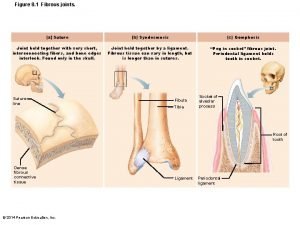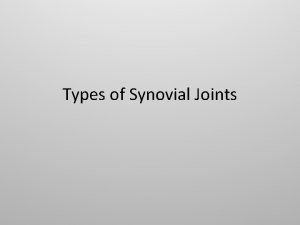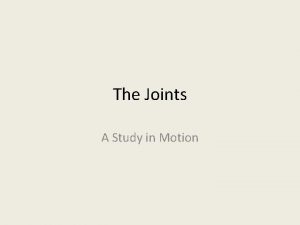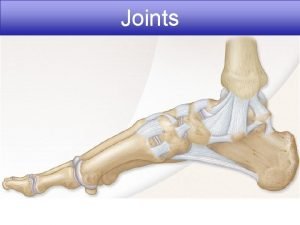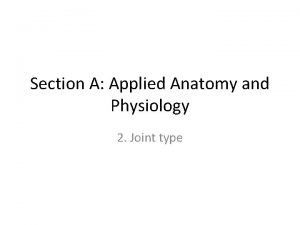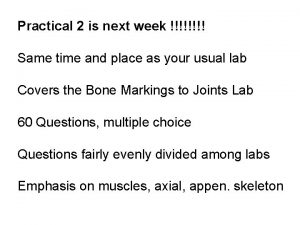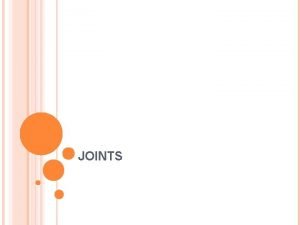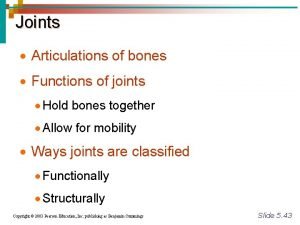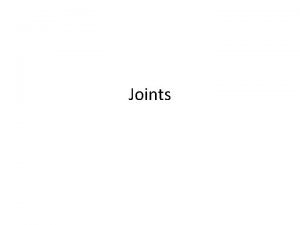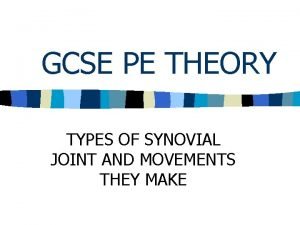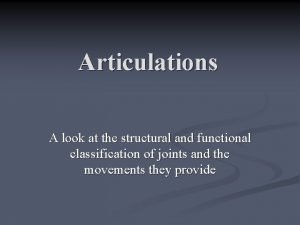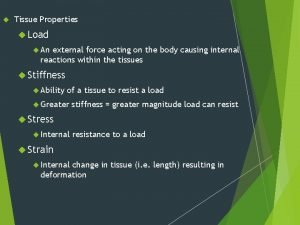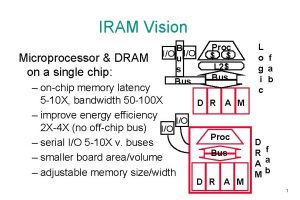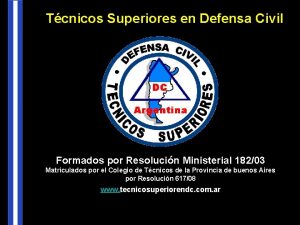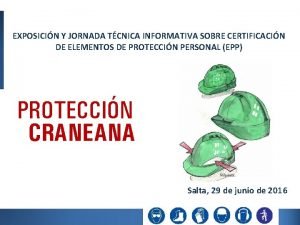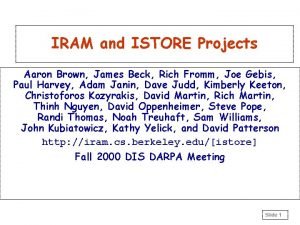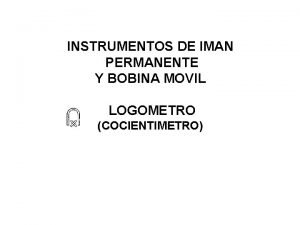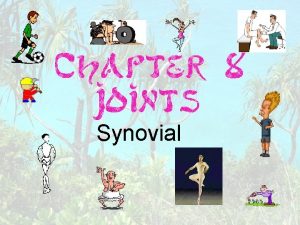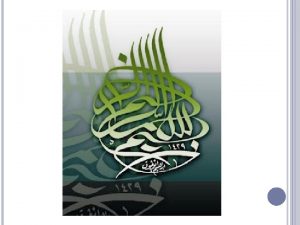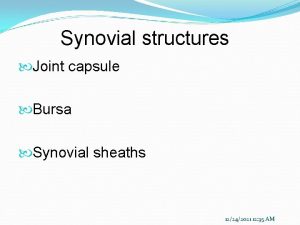SYNOVIAL JOINT Dr Iram Tassaduq SYNOVIAL JOINT Joint


























- Slides: 26


SYNOVIAL JOINT Dr Iram Tassaduq

SYNOVIAL JOINT �Joint in which two bones are separated by a space called a joint cavity �Most are freely movable

FEATURES OF SYNOVIAL JOINT �Articular capsule �Synovial membrane and fluid �Articular cartilage �Articular discs and menisci �Tendon �Ligament �Fatty pad �Bursae


CAPSULE • continuous with the periosteum of articulating bones and unites the articulating bones; • consists of two layers – the outer fibrous membrane that may contain ligaments • the inner synovial membrane • highly innervated, but avascular

ARTICULAR CARTILAGE • Articular cartilage covers the ends of bones. It has a smooth, slippery surface, which allows the bones to slide over each other without rubbing. 7

ARTICULAR CARTILAGE

SYNOVIAL MEMBRANE �It is the partition found between capsule and the joint cavity.

SYNOVIAL FLUID �Lubricating fluid in joint cavity to reduce friction

ARTICULAR DISC thin, oval plate, placed between the condyle of the mandible and mandibular fossa

LIGAMENTS Fibrous bands or sheets of connective tissue linking two or more bones or cartilages together. One or more ligaments provide stability to a joint during rest and movement.

TENDON �tough band of fibrous connective tissue that usually connects muscle to bone and is capable of withstanding tension.

BURSAE the fluid sacs and synovial pockets that surround and sometimes communicate with the joint cavity.



TYPES OF SYNOVIAL JOINTS �Plane joint �Hinge joint �Pivot joint �Condyloid joint �Ellipsoid joint �Saddle joint �Ball and socket joint 17

PLANE JOINT � a synovial joint in which the opposed surfaces are flat or only slightly curved.


HINGE JOINT �Resemble door hinge �Flexion and extension possible

PIVOT JOINT �Central bony pivot surrounded by bony ligamentous ring �Rotation is only possible movement

CONDYLOID JOINT �Oval convex surfaces on one bone fits into a concave shaped depressions on the next

ELLIPSOID JOINT �Elliptical convex surface fits into elliptical concave surface �Flexion, extension, abduction and adduction occur • Rotation is not possible

SADDLE JOINTS �Articular surfaces resemble a saddle on a horse back �Flexion, extension, abduction, adduction and rotation are permitted

BALL AND SOCKET JOINT �Most mobile joints of the body �All movements possible

 Synovial joint
Synovial joint Coraco glenoid ligament
Coraco glenoid ligament Synovial bicondylar joint
Synovial bicondylar joint Extension synovial joint
Extension synovial joint Uniaxial
Uniaxial What is condyloid joint
What is condyloid joint Synovial joint diagram
Synovial joint diagram Pivot joint analogy
Pivot joint analogy Amphiarthrosis examples
Amphiarthrosis examples Applied anatomy of synovial joint
Applied anatomy of synovial joint Intercarpal joint
Intercarpal joint Synovial joint definition gcse pe
Synovial joint definition gcse pe General structure of a synovial joint
General structure of a synovial joint Synovial joint
Synovial joint Iram dram
Iram dram Iram 3801
Iram 3801 Iram grenoble
Iram grenoble Iram 3620
Iram 3620 Iram
Iram Iram aaron
Iram aaron Ikev
Ikev Normas iram cursogramas
Normas iram cursogramas Norma iram 3610:2015
Norma iram 3610:2015 Iram 3626-2004
Iram 3626-2004 Iram software
Iram software Instrumento de iman permanente y bobina movil
Instrumento de iman permanente y bobina movil Iram 3625
Iram 3625
